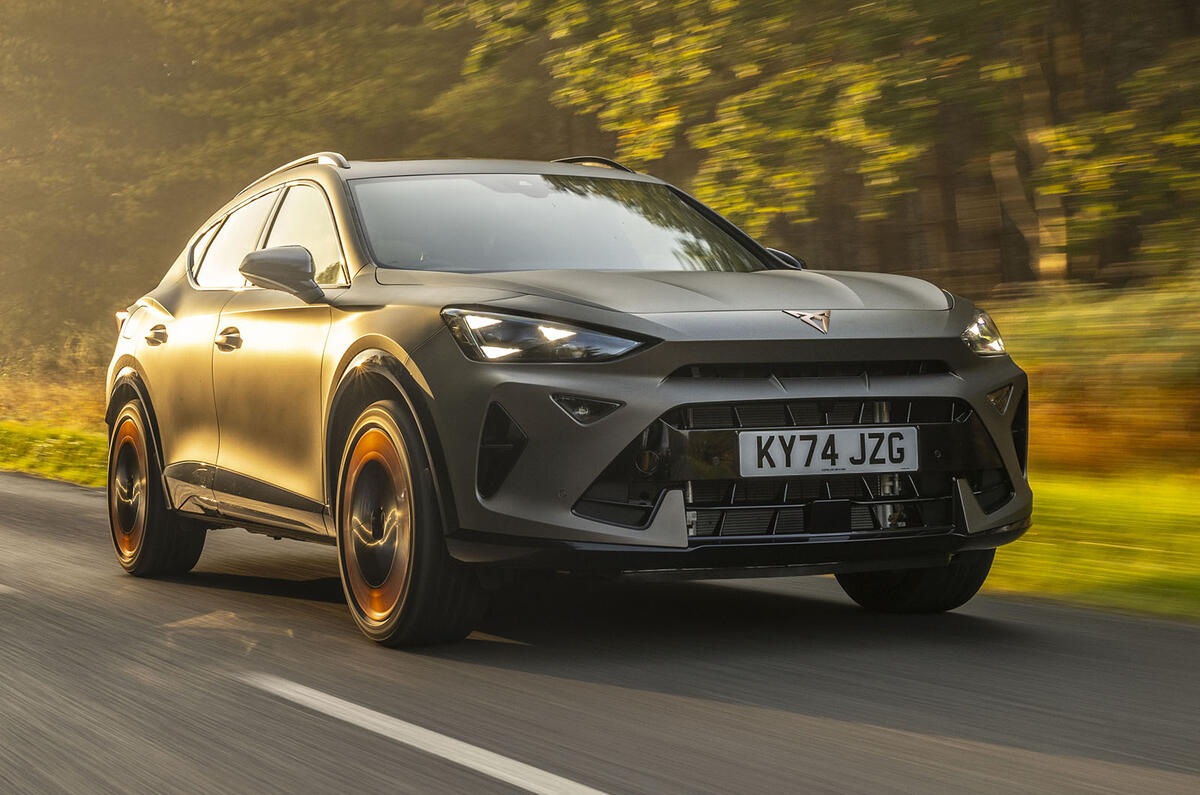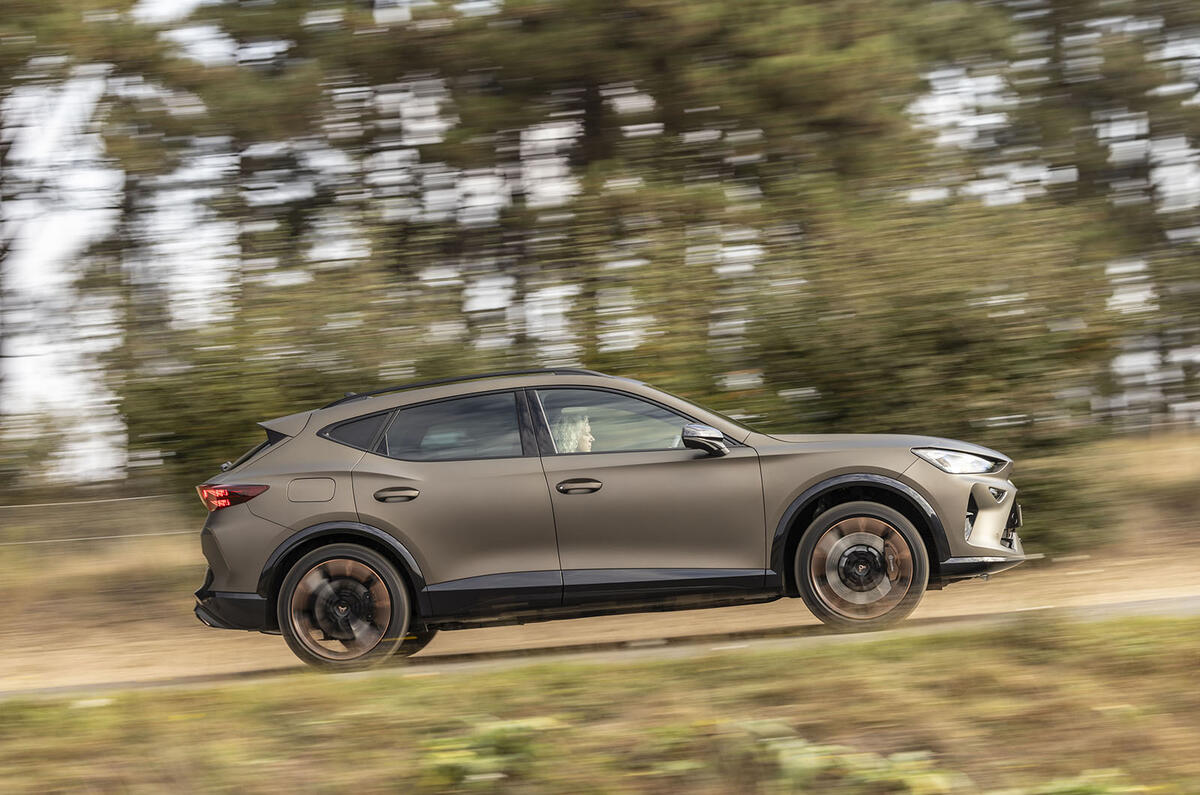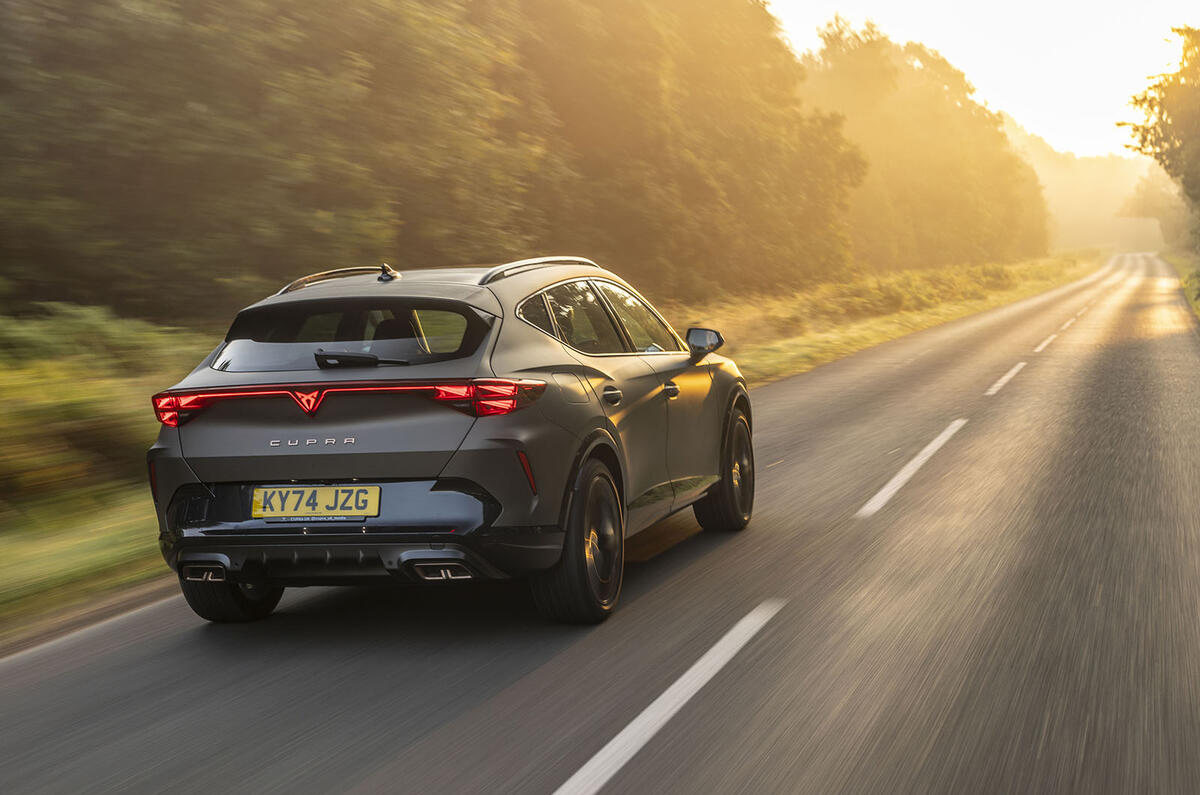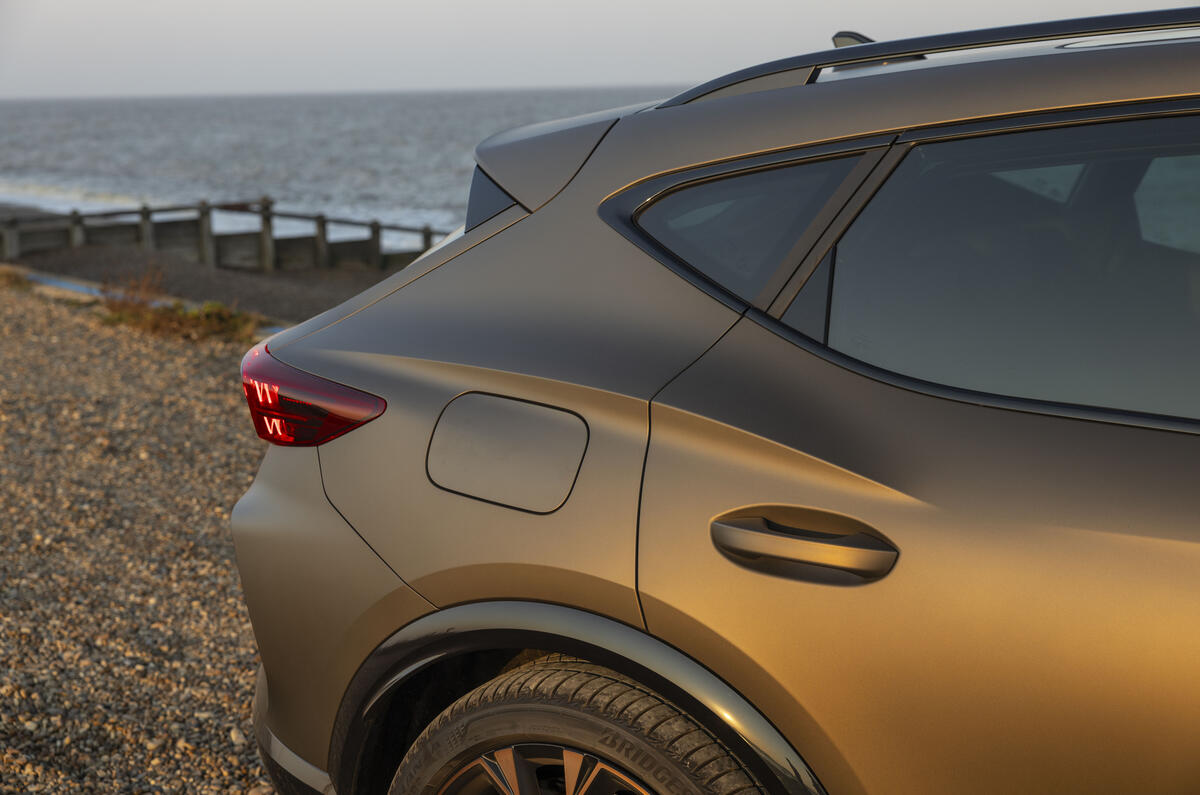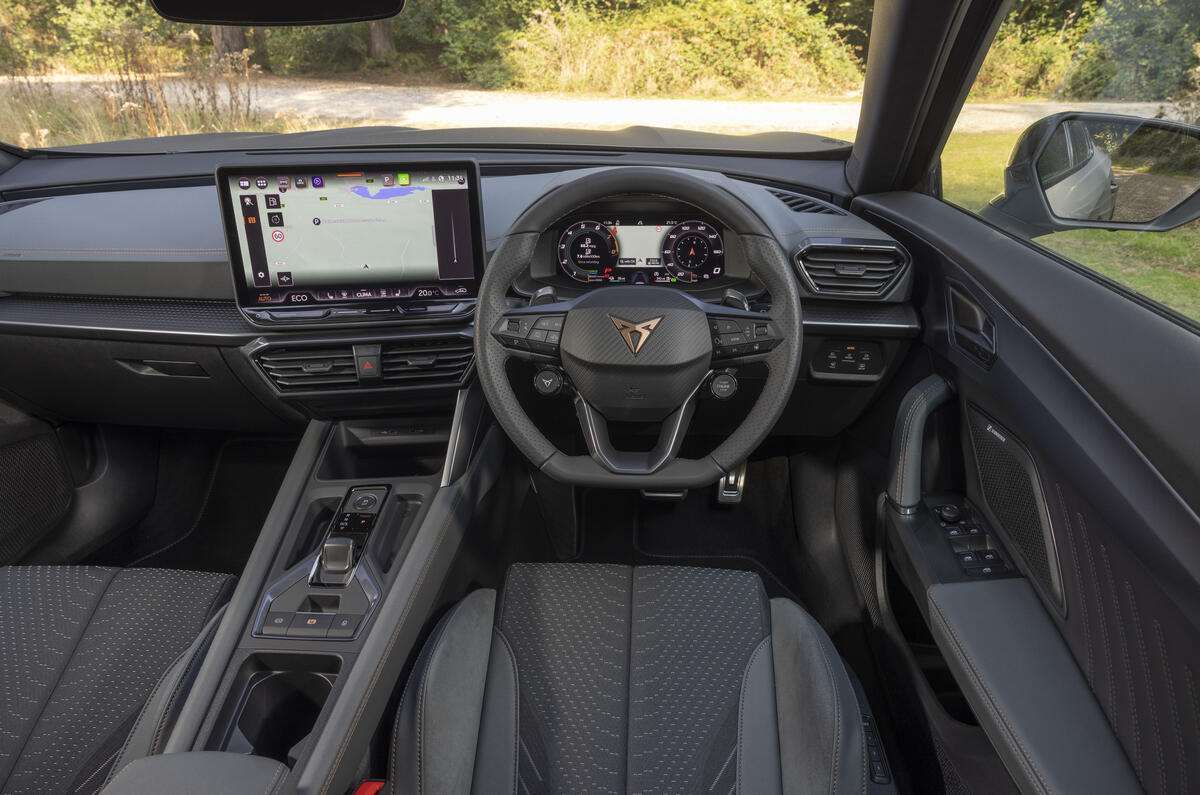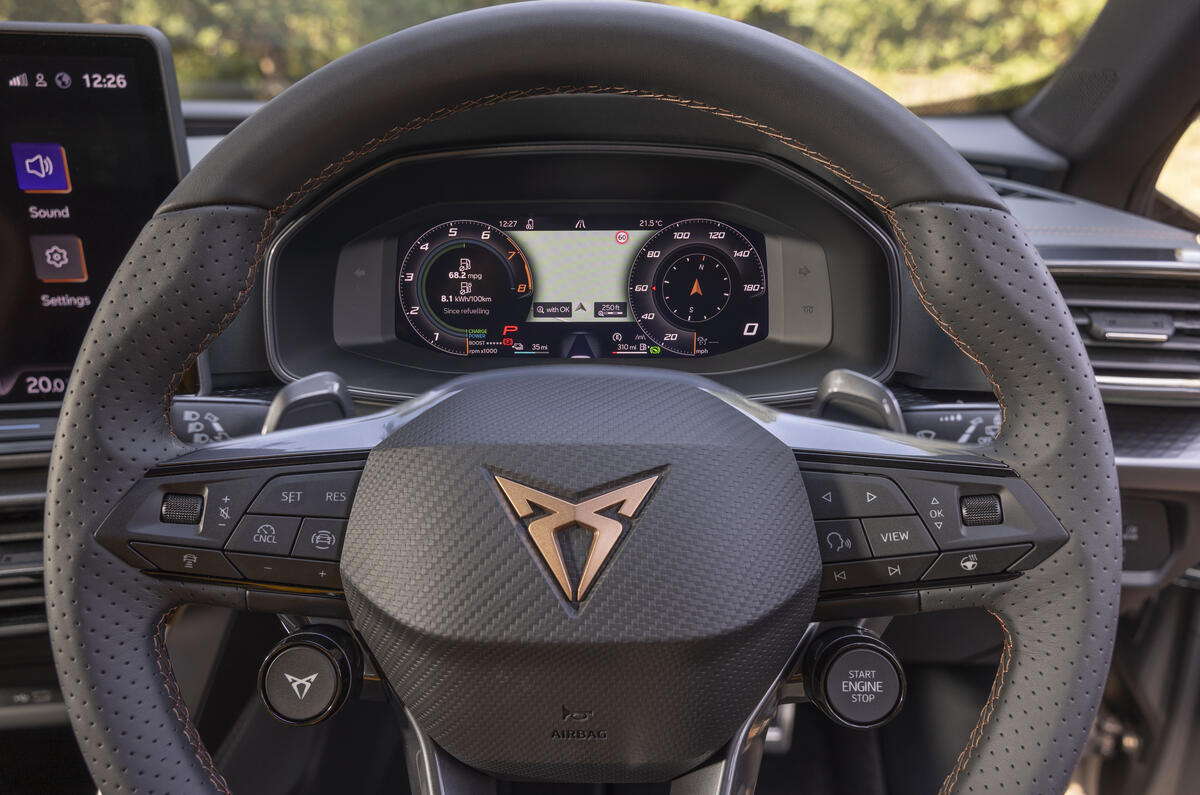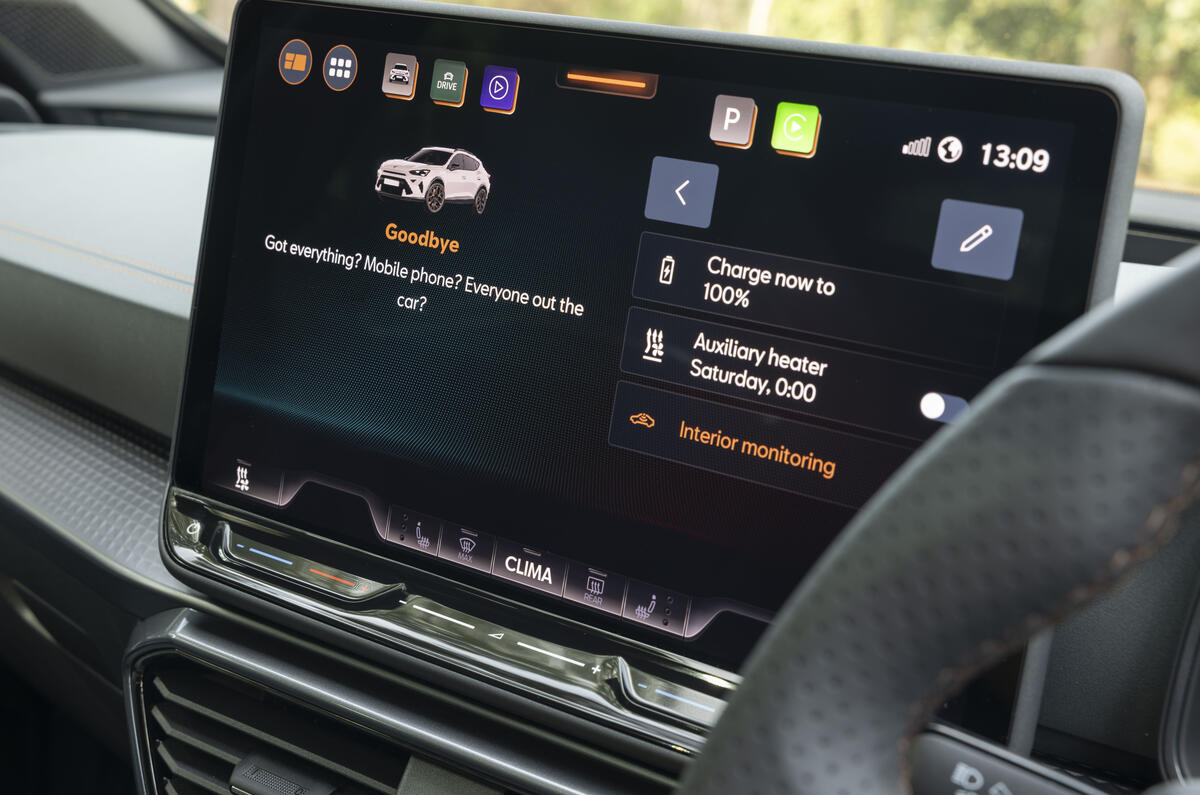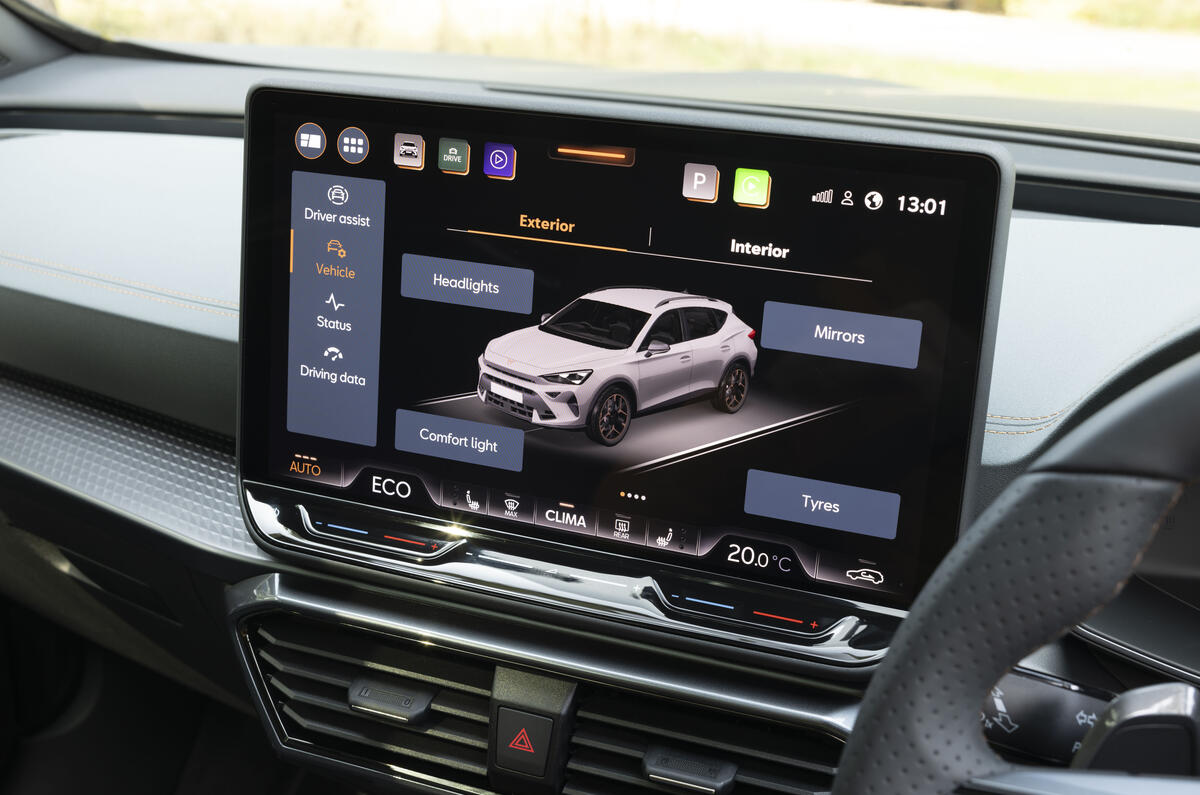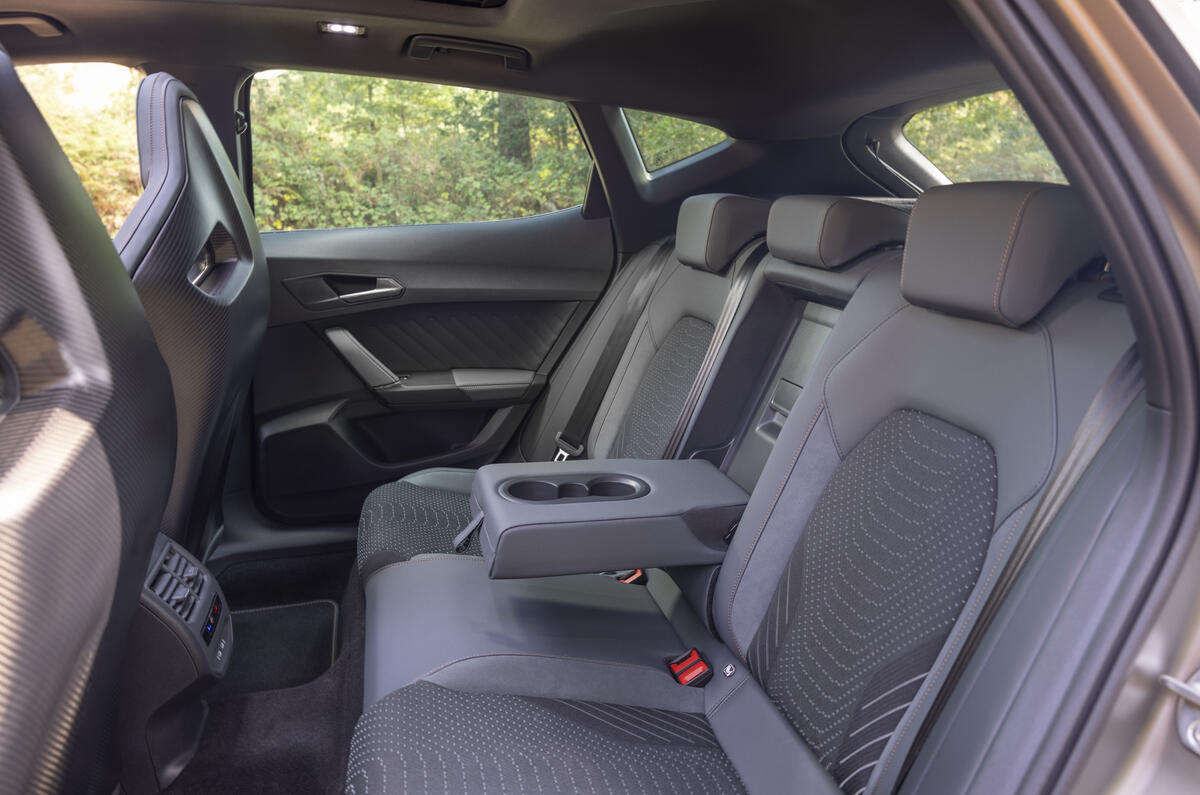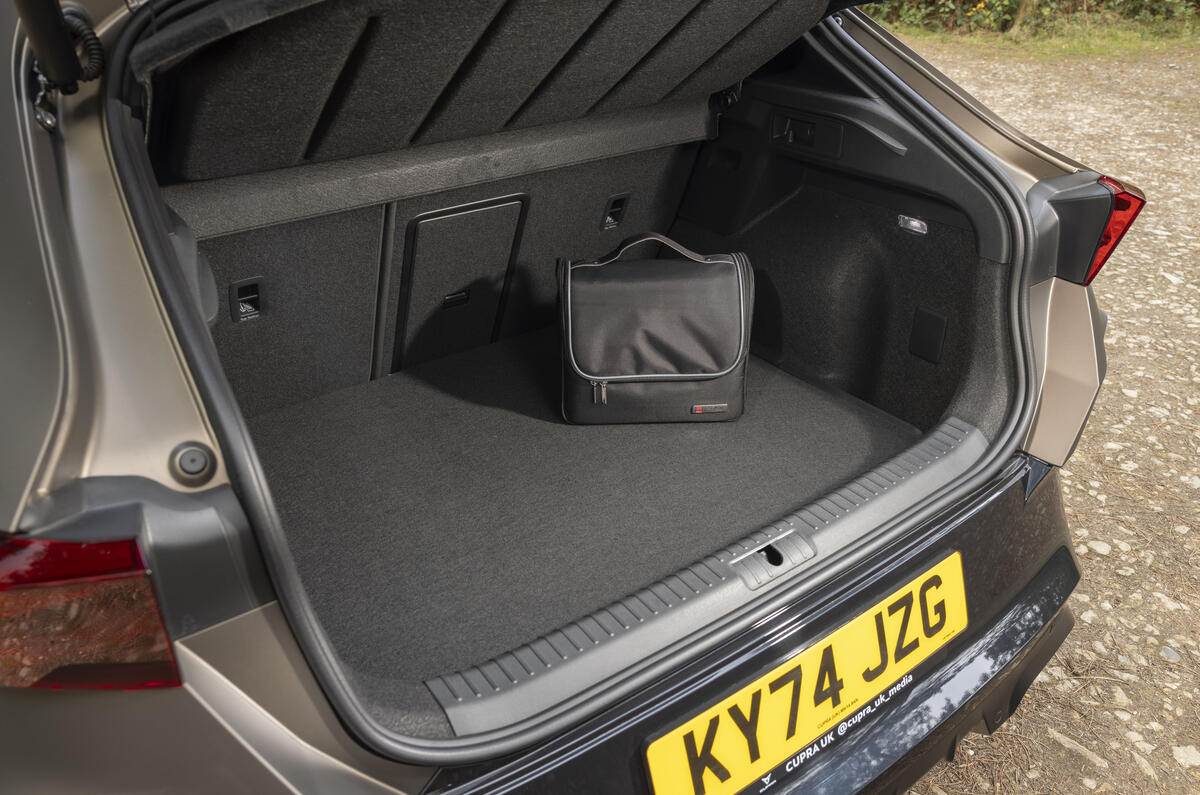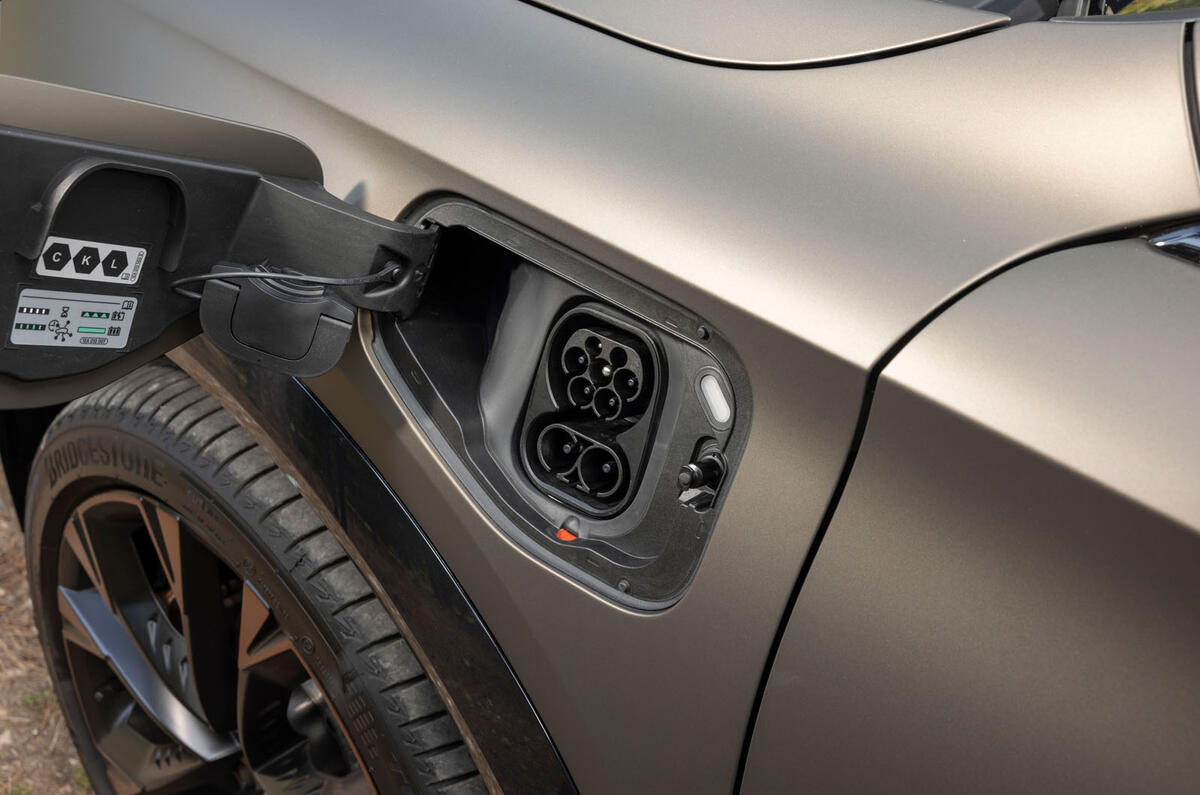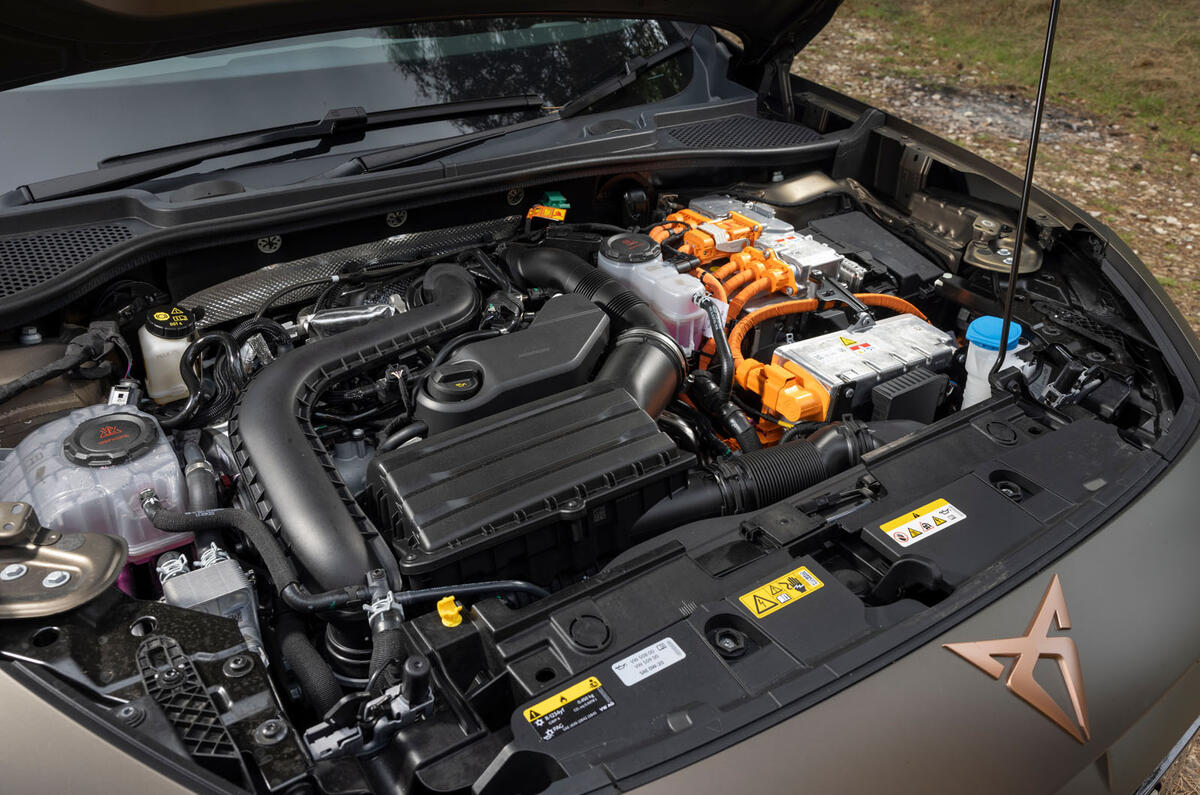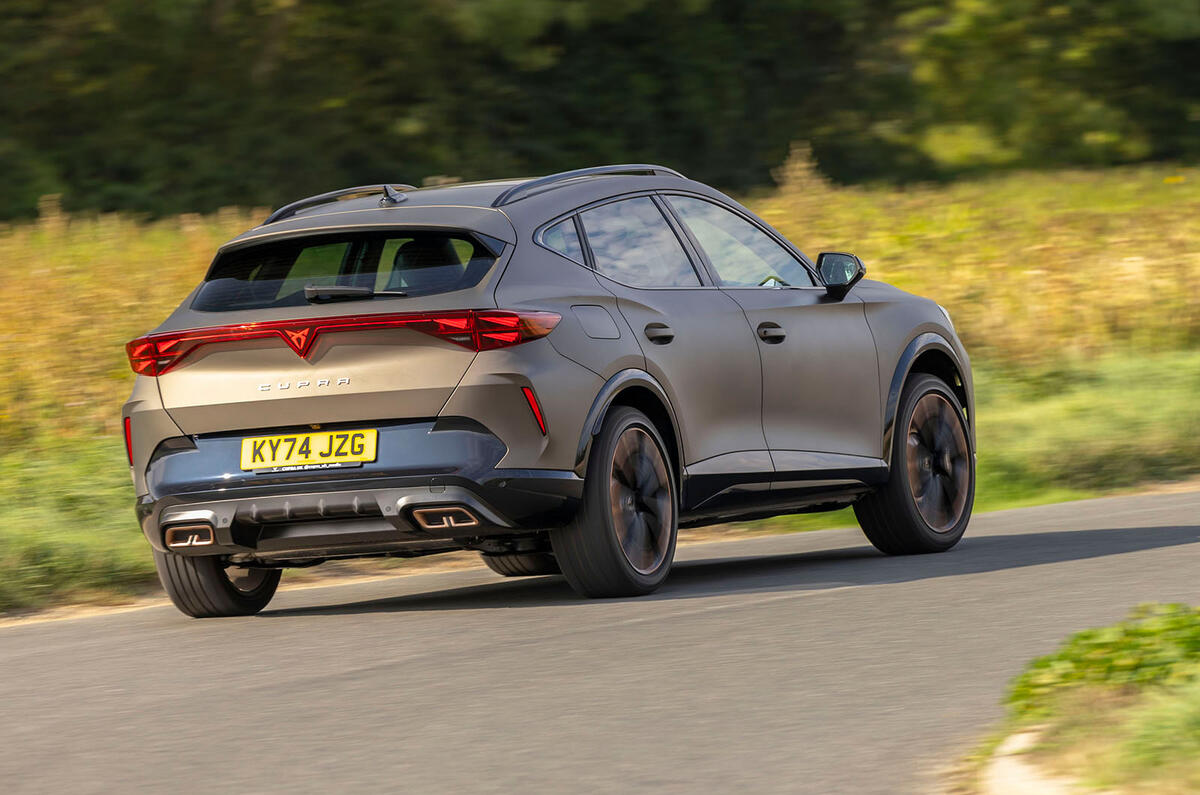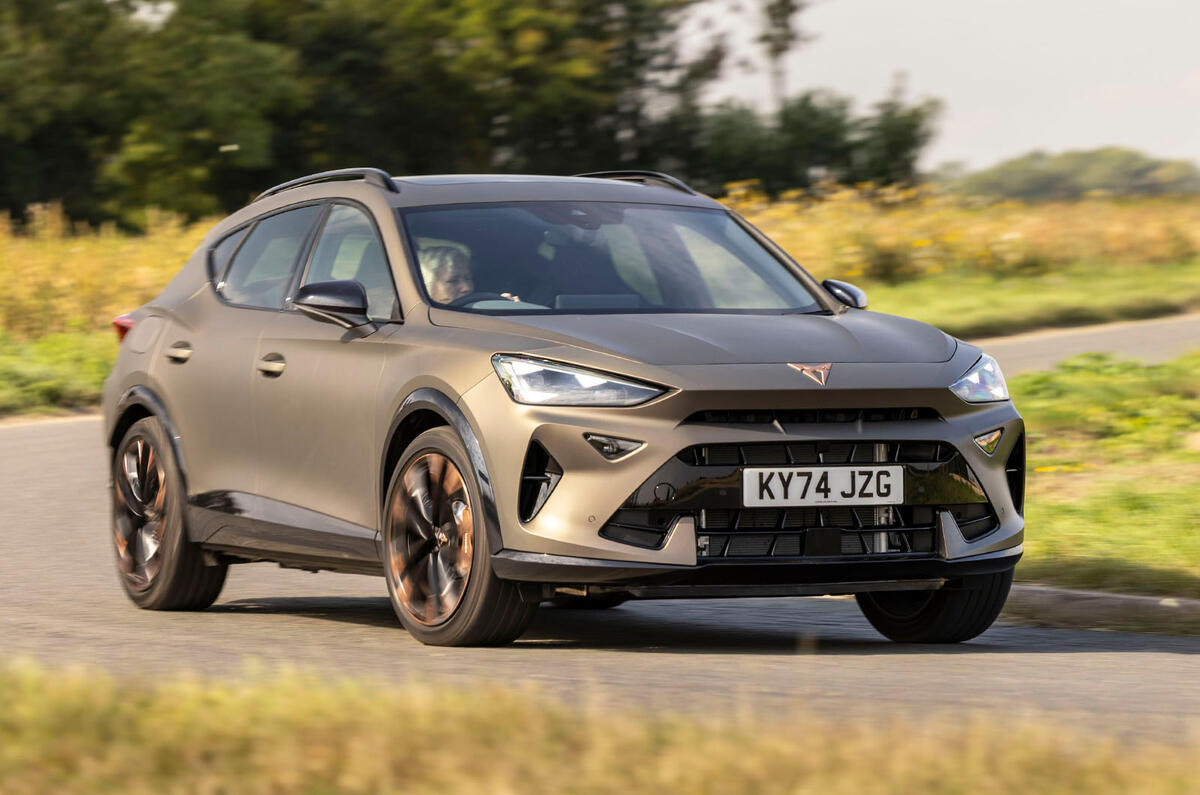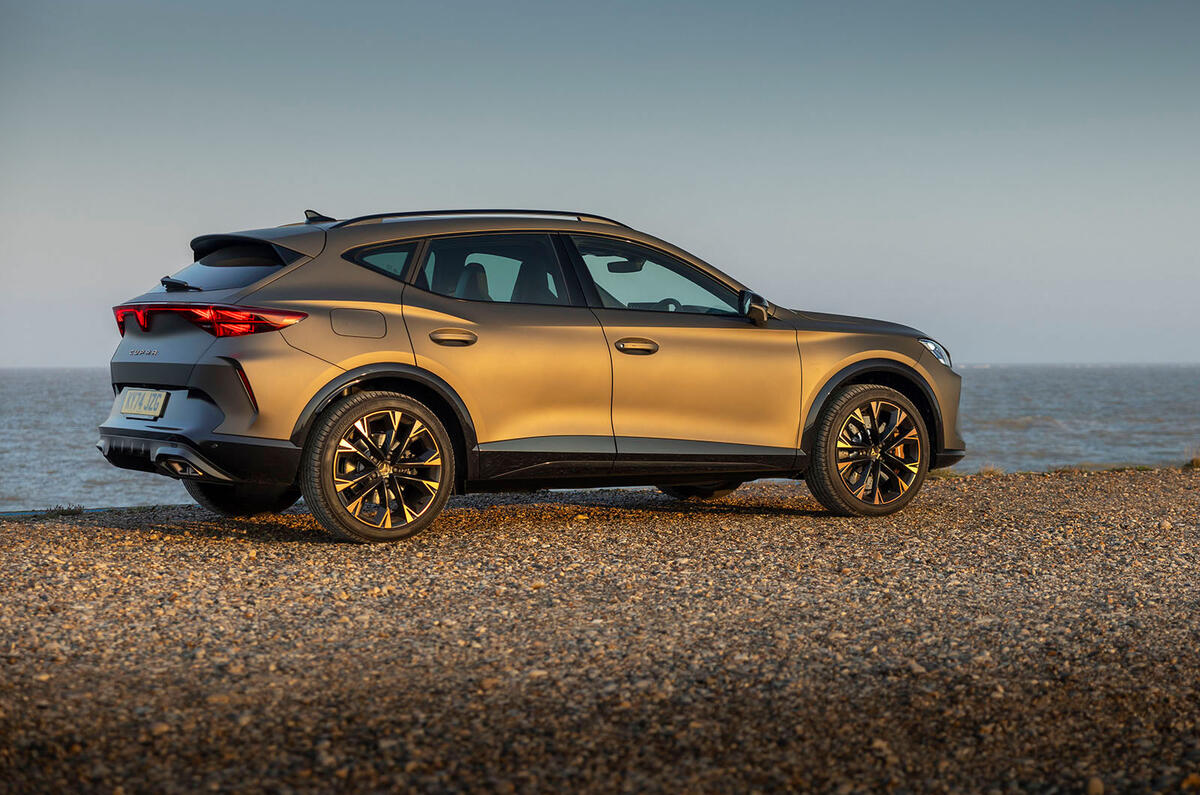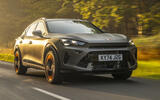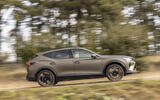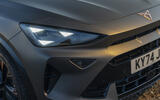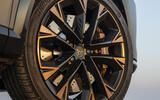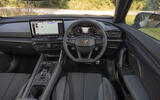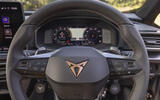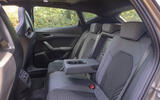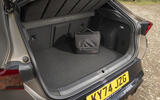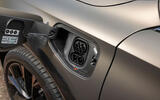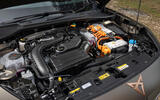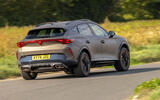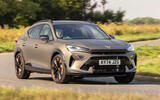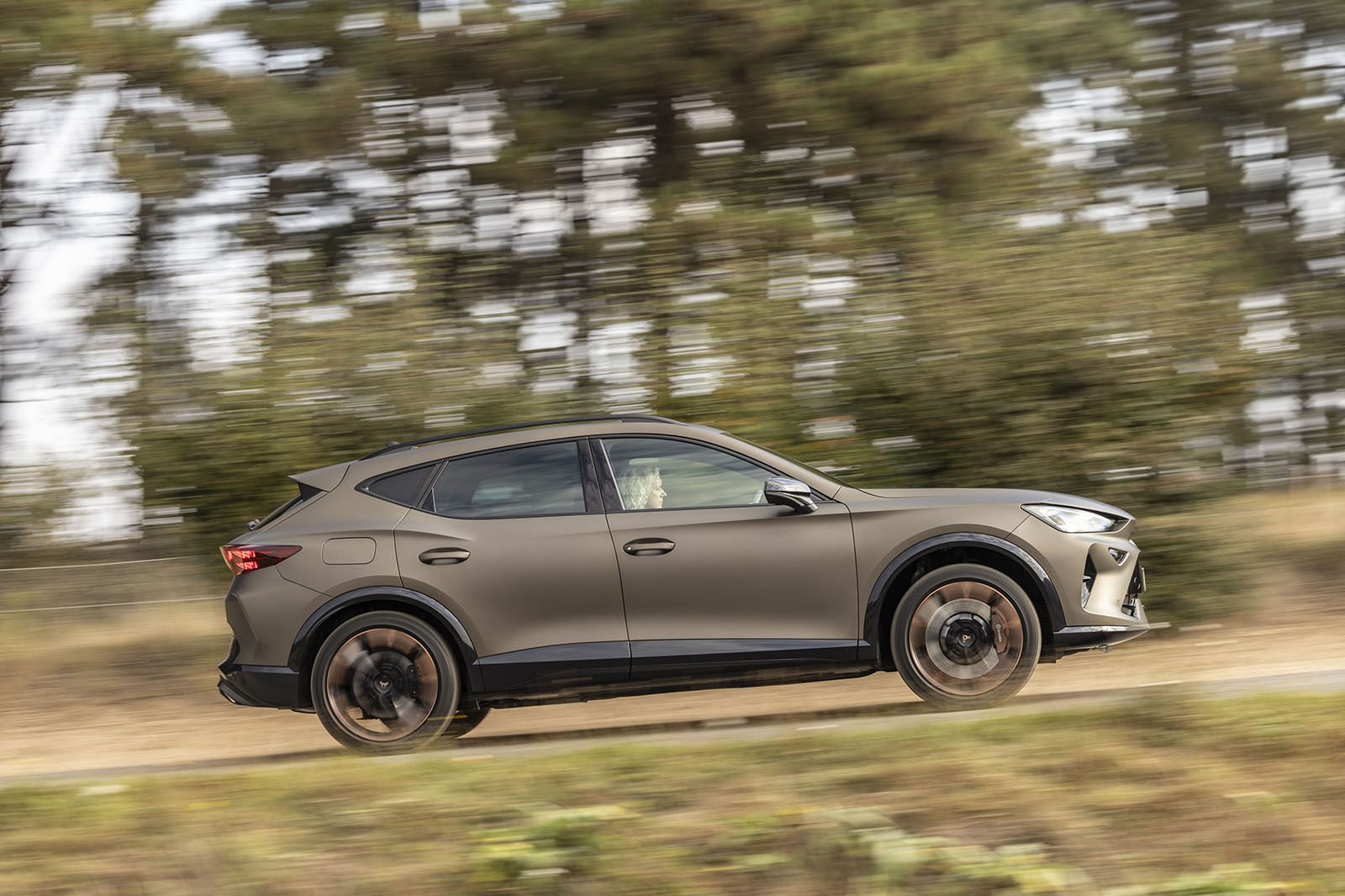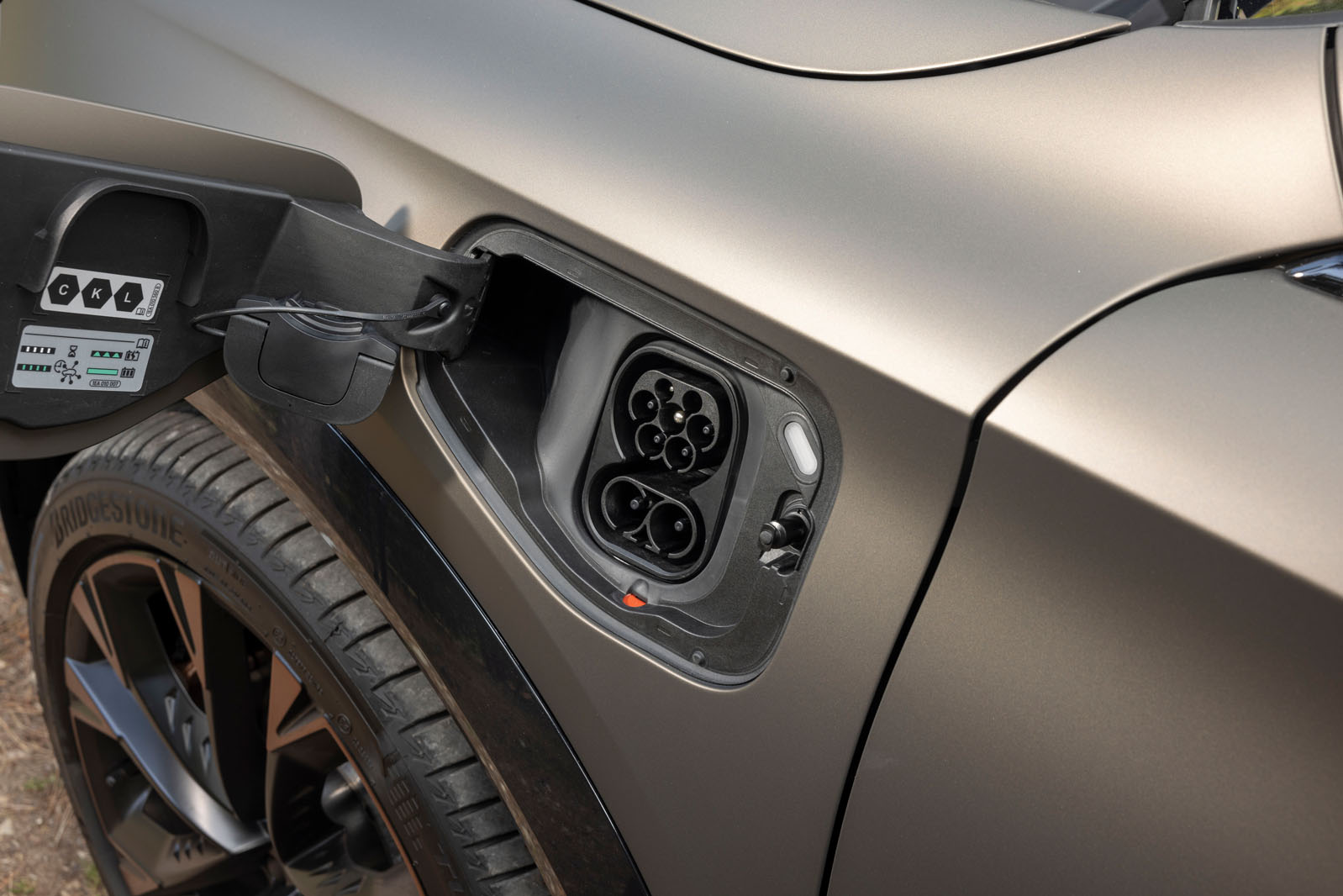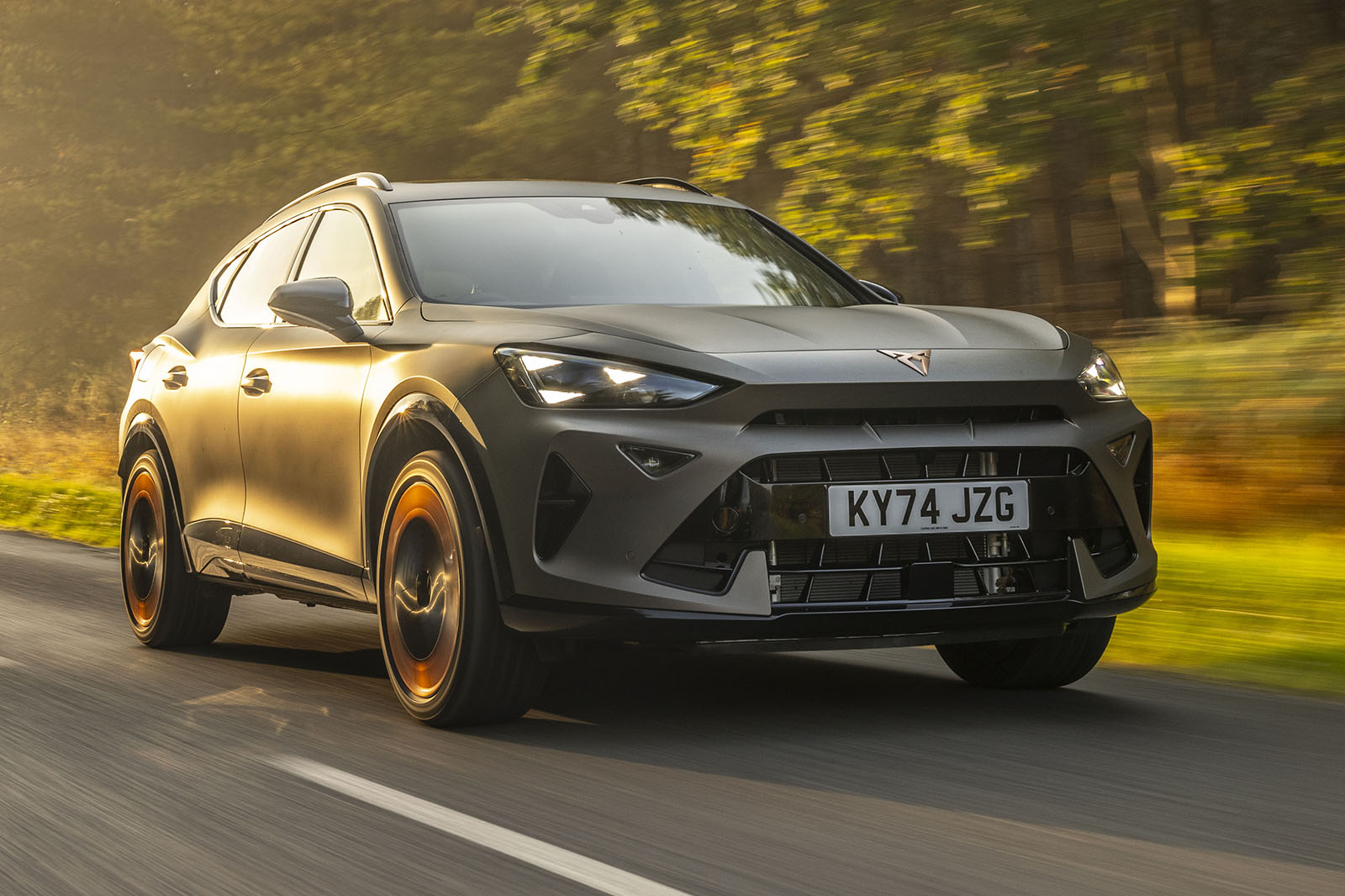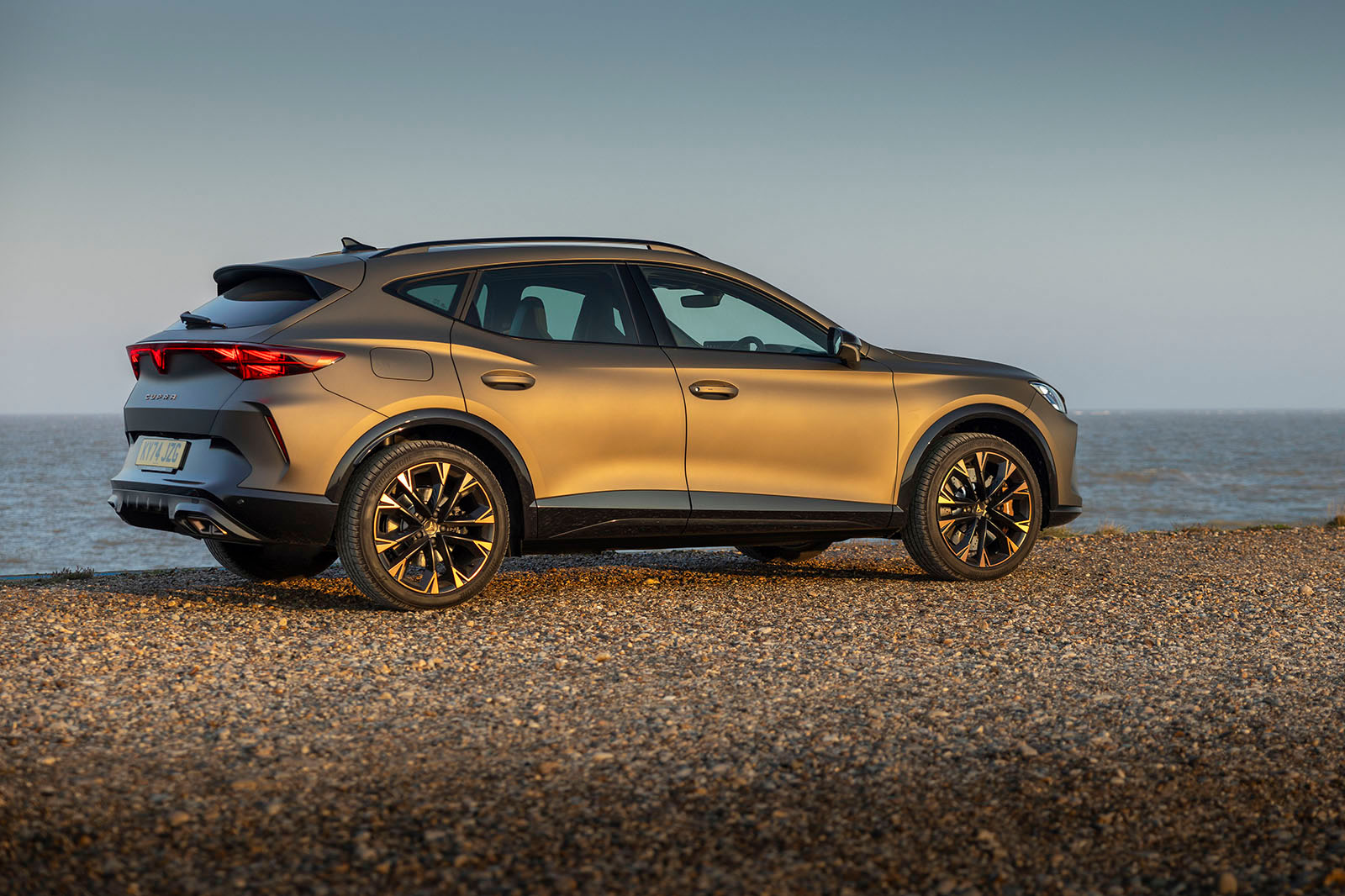The Formentor handles like a fast crossover that knows what it’s for, which sounds straightforward enough but isn't as common as you might think. Instead of doing some doomed, jacked-up impression of a circuit-aspired hot hatchback, it has just the right amount of grip, agility and body control blended with a good dose of compliance, composure and drivability that would make the car a natural choice for the quicker, keener sort of everyday driving.
The variable-rate steering is usefully weighty in the sportier driving modes and doesn’t pick up pace so quickly off-centre as to suddenly become hyper-responsive. It filters quite a bit and some testers would have preferred more tactile feel, but the way it’s tuned nonetheless suits the brisk, compliant, easy-driving temperament of the car well.
In this respect, the entry-level 1.5, being that bit lighter and more modestly tyred, has more communicative steering than its range-mates. It’s clearly no hot hatch, but the basic Formentor turns in well and tucks in neatly on a trailing throttle. It’s a very enjoyable steer.
The hybrids are the least appealing in the corners. With front-wheel drive and a bunch more weight, they feel more ponderous and liable to understeer than the pure-petrol models.
Keen drivers will gravitate to the range-topping 4WD petrol model, particularly as it has gained a new party trick with the 2024 update. The pre-facelift model’s clutch-based 4WD system made it stable and sure-footed over bumps and on slippery surfaces, but it did feel natively FWD ultimately, gently washing wide to signal its limits if you opened the throttle early.
As well as gaining 23bhp, it got the Golf R’s rear torque-splitter, a device that can vector torque to the outside rear wheel when you're exiting bends. This gives it a useful dose of agility and potential to entertain.




